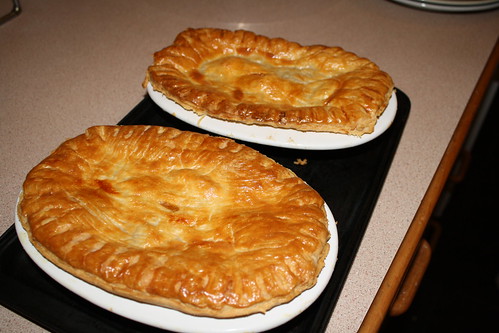date of visit: Friday 20 August 2010
Our previous trip to the Taj Tandoor, on Rundle Street, was towards the end of last year, quite late on a busy Saturday night. On that occasion we enjoyed our food but were left underwhelmed by the service.
We headed for a return visit on Friday night – this time very early in the piece (around 6:30pm) and the restaurant was easily half empty. It filled up rapidly in the hour or so we were there, so if you want to eat slightly later on a Friday night then booking is recommended.
Actually, booking isn’t recommended (by me, at least) – because the sloppy service we experienced last year hasn’t improved and our experience on Friday night was (and I’m being kind here) laughable.
We arrived without a booking and, despite the large number of empty spaces, finding us a table turned in to a two man operation. This kind of redundancy was evident throughout our meal … if a job could be done by one person you could pretty much guarantee it would be done by two or more. There appeared to be a clear hierarchy which meant that staff wasted time deferring to at least one other person before making decisions.
This is particularly frustrating when you’re waiting for a drink and pappadums! We were actually given menus while waiting for a table but, when seated, had to wait a surprisingly long time for a drinks order to be taken. Naturally, we weren’t surprised when our drinks took a while to turn up …
The icing on the bad service cake was that, at the point we were about two thirds of the way through our entrées, literally, still with knives and forks in hand, we were approached by a waitress who asked if we were ready for our main courses. What? Mid mouthful am I really expected to answer that? What made her think that we would be ready?
It struck me as odd that, in a restaurant so eager to turn tables we would have to wait to pay our bill. But wait we did … as two people doubled up on register work, sorting bills, dockets, receipts … This meant that neither paid very much attention to us as the restaurant took our money. What an excellent way to make your customers feel valued.
You’ve probably realised that we won’t be rushing back, but clearly this is a popular Adelaide eatery, and if you can forgive bad service you might be interested in the food, which we feels falls in the ‘pretty good’ category.
I started with a very nice mango lassi, which I scoffed before almost any food arrived. I began my meal with the vegetable pakoras and Andy with the fish tikka. Both of these dishes suffered from being reheated – in the case of the fish, very much so, as it was really quite rubbery – the knife was keen on bouncing off the flesh than separating the flakes. The pakoras were in a lot better shape – a little tough but tasty nonetheless.
For main course I had a plate of the dahl with a buttery, buttery naan and Andy had the lamb rogan josh with pulao rice. The dahl had a good heat to it and was rich and creamy (and was perfectly mopped up by the naan) and Andy really enjoyed his lamb – it was tender and the sauce was rich, redolent with cloves and finished with a lovely sour tang.
But that’s not enough for me to put myself through the sloppy service mill again.T here are many good curry restaurants in Adelaide with service several notches above that at the Taj Tandoor. And, of course, there’s always the problem that an excellent curry can be produced at home – a restaurant really does need to offer something a bit extra whether it sits on Rundle Street or not.
I doubt we’ll be giving the Taj Tandoor the opportunity for third time lucky for a while …



